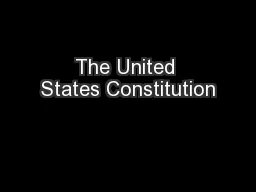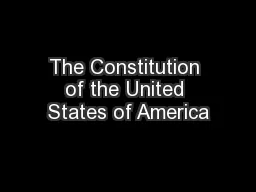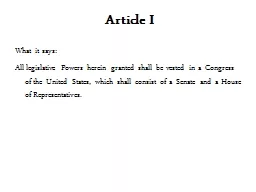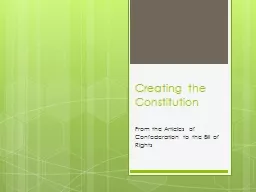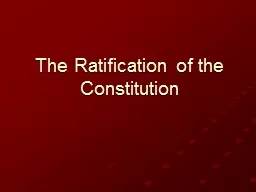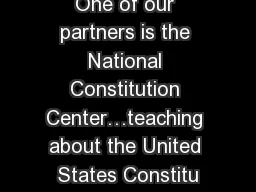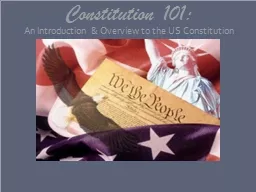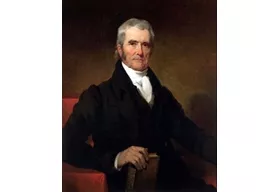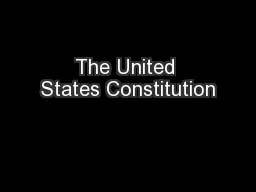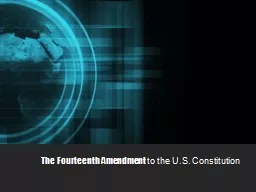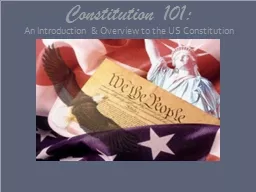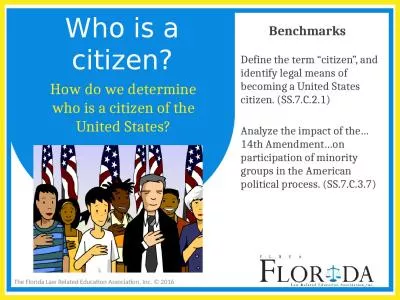PPT-The United States Constitution
Author : min-jolicoeur | Published Date : 2015-09-19
What It Says And What It Means The Preamble What it says We the people of the United States in Order to form a more perfect Union establish Justice insure domestic
Presentation Embed Code
Download Presentation
Download Presentation The PPT/PDF document "The United States Constitution" is the property of its rightful owner. Permission is granted to download and print the materials on this website for personal, non-commercial use only, and to display it on your personal computer provided you do not modify the materials and that you retain all copyright notices contained in the materials. By downloading content from our website, you accept the terms of this agreement.
The United States Constitution: Transcript
Download Rules Of Document
"The United States Constitution"The content belongs to its owner. You may download and print it for personal use, without modification, and keep all copyright notices. By downloading, you agree to these terms.
Related Documents

